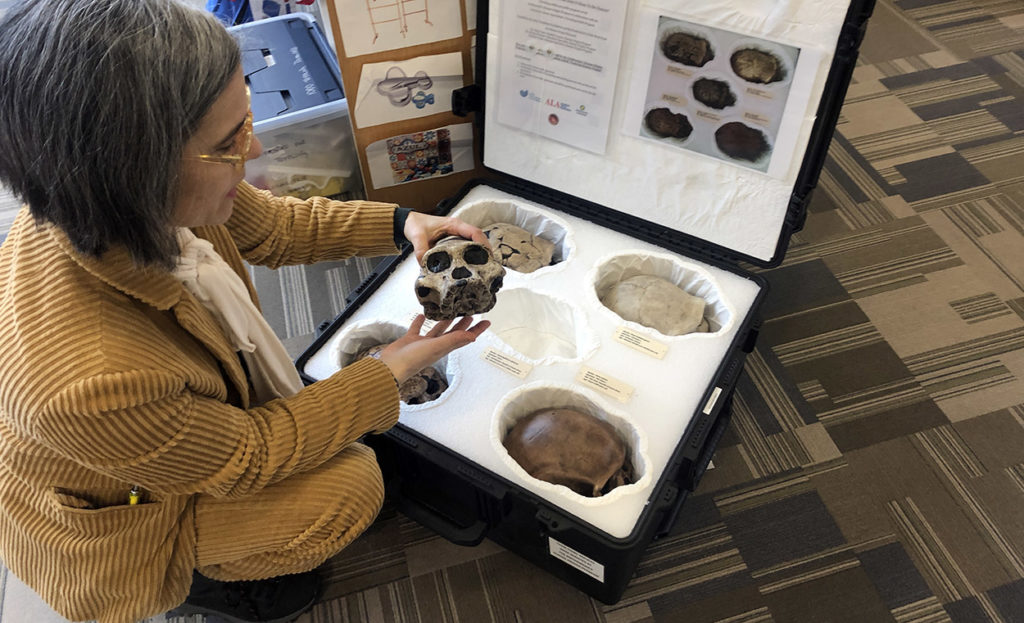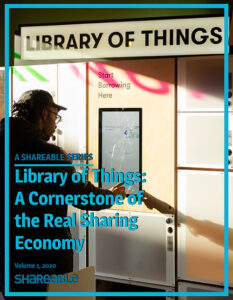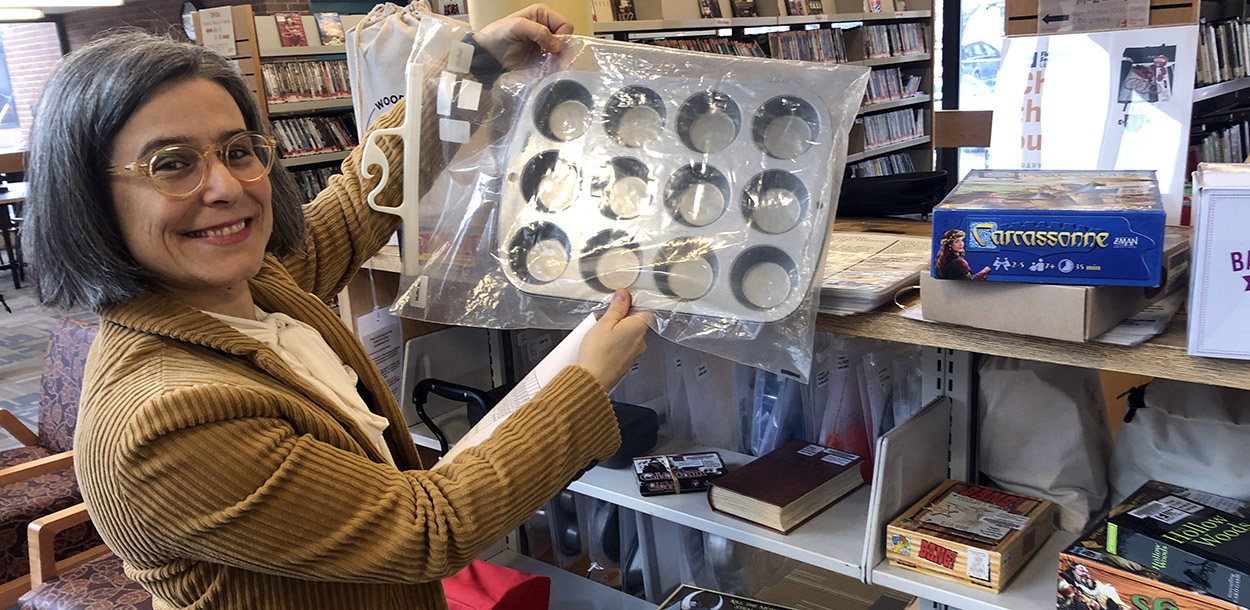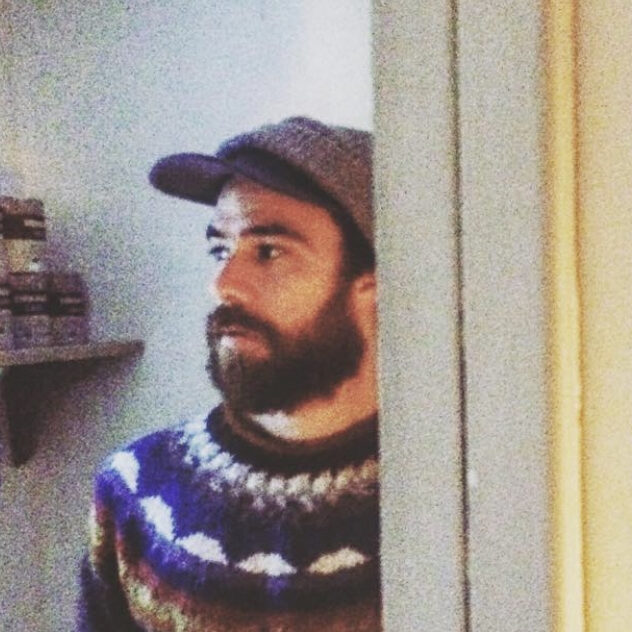I’m a bit of a minimalist. A few years ago, I went through all of my stuff and got rid of most of it. This was before Marie Kondo’s “items that spark joy” method went viral — a philosophy based on reducing the material clutter that permeates our lives under consumer capitalism. As the saying goes, it is much easier to accumulate things than it is to get rid of them. Anyone who has ever had to go through a deceased family member’s belongings, or who has a storage unit filled with content that makes their stomach churn, knows this very well.
But there was a bit of a problem after I got rid of most of my stuff. Suddenly, I noticed that there were things I needed that I no longer owned. For example, I had donated a bunch of old board games to The Salvation Army. I hadn’t used them in years, and then a friend of mine suggested that we have a board-game night. There were similar examples that kept popping up: irons, cordless drills, decorative baking pans — these were all things that took up so much space and that I rarely used. But when I did need them, they were no longer available.
There must be a solution to this, I thought. And it turns out, there is: Libraries of Things. Imagine a public library, but for items like gardening tools, board games or food dehydrators. They exist to some extent more informally, and people have been utilizing them for years now. But there is an exciting new trend that could really be a game-changer in how many people access them: They’re starting to pop up in public libraries themselves.
There are now dozens of public libraries which have incorporated Libraries of Things into their catalogs, from Berkeley Public Library in California to the Fletcher Free Library in Burlington, Vermont. The Library of Non-Traditional Things (LONT) in Burlington is a particularly unique collection. It began about 20 years ago as a modest tool library, but has since grown in scale to include all sorts of different items such as musical instruments like djembes and ukuleles; tools like air compressors, snow shovels and rakes; sports and outdoor equipment; and a wide variety of kitchenware.

“One of the things that’s been really neat to see over time is how many different people use things for different reasons,” says Emer P. Feeney, the Fletcher Free Library’s assistant director. “For example, we’ve had people come in with teams of volunteers [to borrow rakes] to rake their neighbor’s large lawn because the neighbor can’t do it themselves. We’ve had folks who are marginally housed come in when there’s a big snowstorm [to borrow shovels] to go shovel out driveways and make something like $200 a day.”
The idea to expand the original tool library at Fletcher came from the library’s collection development librarian, Christine Webb. “The nontraditional focus is really exciting — you can borrow anything almost,” Webb says. “But that’s the whole wonderful goal of it, to support that borrowing, sharing economy. So we don’t have to consume everything all the time.”

Community members seem to really like the idea too. “We moved to Burlington this summer and it was a nice surprise to find that they had board games at Fletcher, so we checked a few out,” Jessica Waite, a patron at Fletcher Free Library, says. “We wanted to plant some bulbs and so we borrowed their bulb planter, which was great. It’s not something that we were going to do all the time, so it was really nice to just borrow it once and return it.”
Despite fairly successful circulation numbers, there have been challenges that have popped up as the catalog of things has expanded. Cataloging itself, for example, is much more involved when you’re talking about things other than books.
“With books, you can just buy a mark record that makes that item findable through the catalog and also manageable through our software,” Feeney explains. “With physical items, you have to create it, you have to describe it, you have to use weird fields that have been defined in cataloging to describe things accurately so that, for example, a certain kind of shovel in our collection would be roughly approximate to the same kind of shovel in someone else’s collection.”
Packaging is another issue. For example, it’s not uncommon for board games or puzzles to come back with pieces missing. “When I use a board game at home, I always end up losing a piece,” Feeney admitted. “You have to factor that in, because then someone’s going to have to source that piece or find a replacement. And so, there’s an extra budgeting process that has to happen there.”
And, of course, certain items can be much more expensive than books. Things like GoPros, DVD players and other smaller, valuable items are always subject to theft. Webb and Feeney did not describe this as a challenge that they’ve had to face often, but this is perhaps because they have avoided leaving these items out on the shelves, and instead have them listed as available.

As their collection continues to expand, library staff continue to reference circulation numbers and also solicit recommendations from patrons in order to tailor their catalog to the community’s needs. They are also exploring different ways to collaborate with other public libraries.
“There’s been a lot of discussion amongst the Vermont libraries,” Webb says. “People discovering, ‘Oh, wait, you have a Library of Things, too?’ We’re all starting to notice that we all have various things, so I’m hopeful that maybe down the road we can get into regional resource sharing of some kind.”
Public libraries already strengthen equity in access to knowledge, and thus seem like ideal institutions to expand that access out to many of life’s essential items. And not just for tools like snow shovels, but for things that provide joy and meaning in life to those who may not otherwise have access to them. Things like portable DVD players for those currently experiencing homelessness, for example.
Further, by challenging the ownership culture that has been imposed upon us through more than a century of consumer capitalism, the move toward public Libraries of Things is a crucial component in reversing the endless cycles of consumption which lead to overflowing landfills and contribute significantly to climate change.

But, finally — and perhaps most significantly — public Libraries of Things help to expand the town commons. They build community, encourage sharing and civic responsibility, and give communities a sense of connection.
“We’re a really monetized culture and most spaces in the public sphere are not really public, you know,” Feeney explains. “When you walk down the street, you really often have to have money to go in somewhere to spend time somewhere. And the library isn’t that kind of space — it’s the living room of our town.”
##
 |
This post is part of our 2020 editorial series on libraries of things. Download the free ebook from the series here. |









